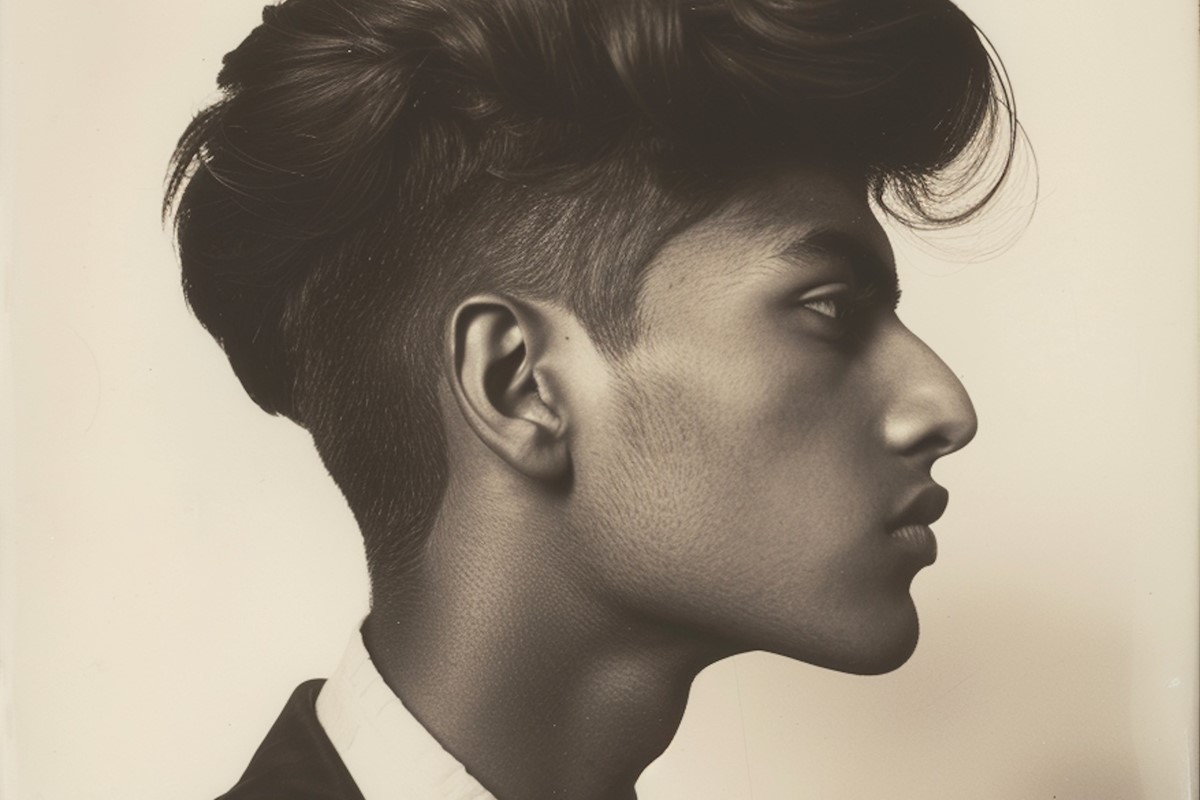
Rewrite
Lead ImageSimon Foxton, 1980s Polaroid test (hair story), 2024Courtesy of the artist
“The genie is out of the box, so why not grab on it and ride,” explains British image-maker, Simon Foxton, while discussing his recent work made with the generative artificial intelligence programme, Midjourney. Foxton is predominantly known for his work as a stylist, examining and proposing new ideas of masculinity, regularly collaborating since the 1980s with photographers such as Nick Knight and Jason Evans, and contributing to numerous fashion publications and consulting for brands including Stone Island.
Recently Foxton retired from styling, now choosing to spend his time experimenting with this new form of image-making. Below, AnOther spoke to Simon Foxton about the role of chance in image-making, audience responses to AI-generated imagery, and how this is the ultimate opportunity for him to create people and worlds.
Adam Murray: How did you first start working with Midjourney?
Simon Foxton: I was working with the hairdresser, Matt Mulhall, he was showing me some images of crazy hairstyles that he had created using Midjourney. This was a couple of years ago, and that was really the prompt for me to give it a go.
I’m no great tech buff, but I basically started playing around with it. Initially I thought it was rubbish, as without the right prompts it can look like slightly cheap science-fiction illustration. But then I realised with the right wording, you can get it to do photographic things, following this it was a lot of trial and error.
AM: What do you enjoy about it?
SF: I love the immediacy of it. I started life as a designer, but then I got into styling because it was an easier route to get across ideas than designing. I found the design process quite laborious, so I happened upon styling and that seemed to be the path of least resistance.
Having recently retired from the world of styling and discovering this, it is allowing me to conjure up a lot of ideas that I’ve had bubbling under for years, but never had the wherewithal to put them into practice. Now I can think about ideas and within a few hours they are on the screen.
AM: When I look through your work; your scrapbooks, your styling, then this, I can see a clear lineage.
SF: I don’t think consciously about it, but you can see this, yes. I’ve had scrapbooks for years and then Tumblr was a huge thing for me until they got kind of prudish. I think I’ve always had that kind of magpie approach of finding things and putting things together that perhaps haven’t been seen before. I think that’s the thing I like about it, you can come up with crazy kinds of juxtapositions.

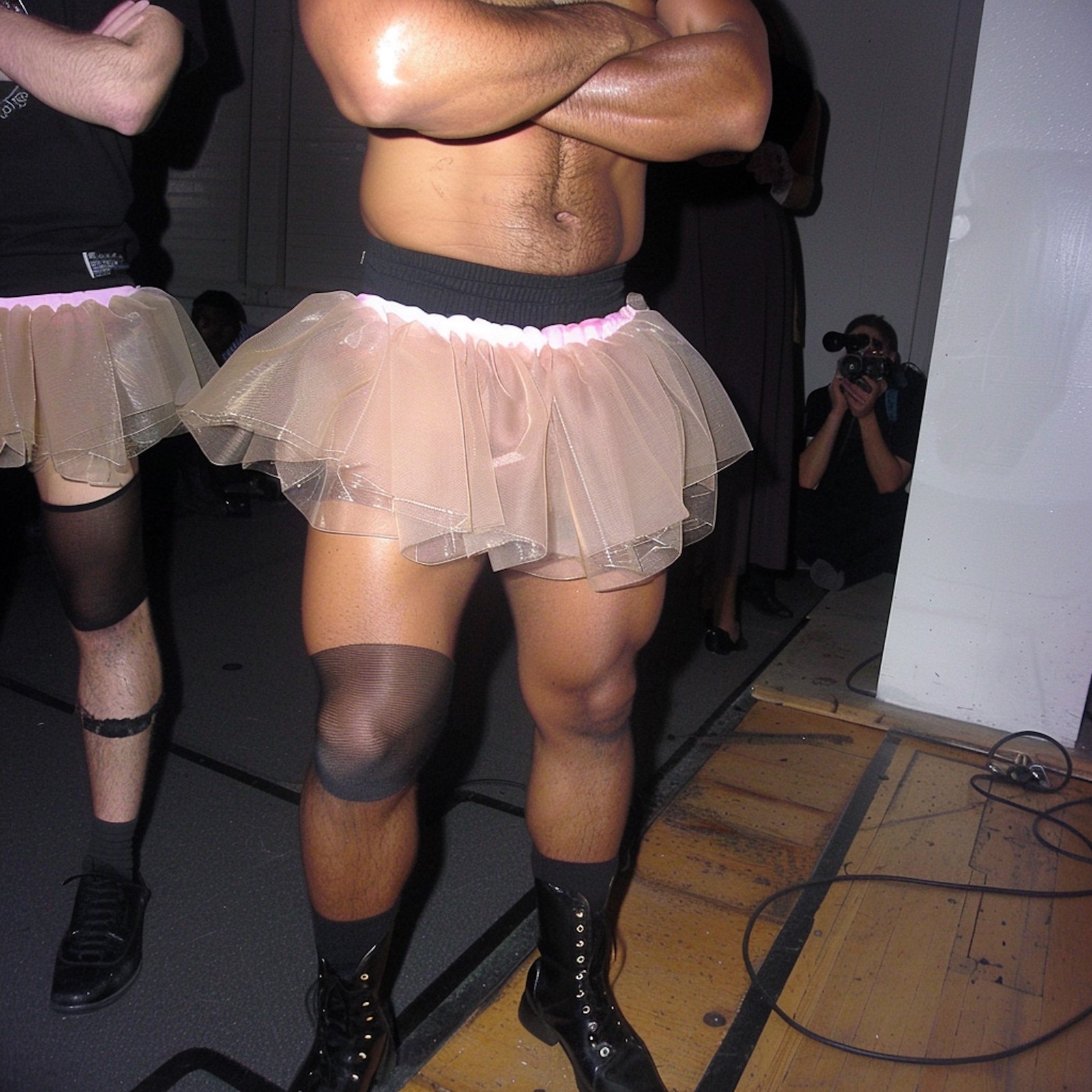
AM: Previously you have spoken about the idea of creating people and worlds, is this the ultimate opportunity for you to do that?
SF: Absolutely, that’s the whole thing. Then I also concoct the written blurbs to accompany the images when I post on Instagram, just to give some context. I’m not doing it to deliberately fool people, I just like to give the images a world to come from.
AM: How much does chance play in the creation of these images?
SF: A huge amount, that’s what I find exciting and enjoyable about doing it. I can’t speak for other AI engines, but with Midjourney, I find it is very intuitive and organic with what it seems to pick up on. I’m not sure if it learns, but it sends me things that I think it knows I will like, sometimes quite left field, almost out of nowhere, but I like it.
That’s the side of styling and photography that I used to like as well. I used to enjoy shoots when I was in tandem with the photographer. It’s happened a lot with Nick Knight or with Jason Evans. We would have ideas, but something would happen in the process and other things would appear that you hadn’t thought of. I like that process where you are surprised by what you are doing.
AM: Do you miss the experience of collaboration? So much of your work was made in collaboration with photographers, models, hair and make-up artists, all very people-based situations. This seems more isolated as a creative process.
SF: I think that speaks to how I am right now. Since lockdown I’ve changed, I’ve become a more hermit-like person. I’ve never been particularly gregarious, and so it suits me down to the ground.
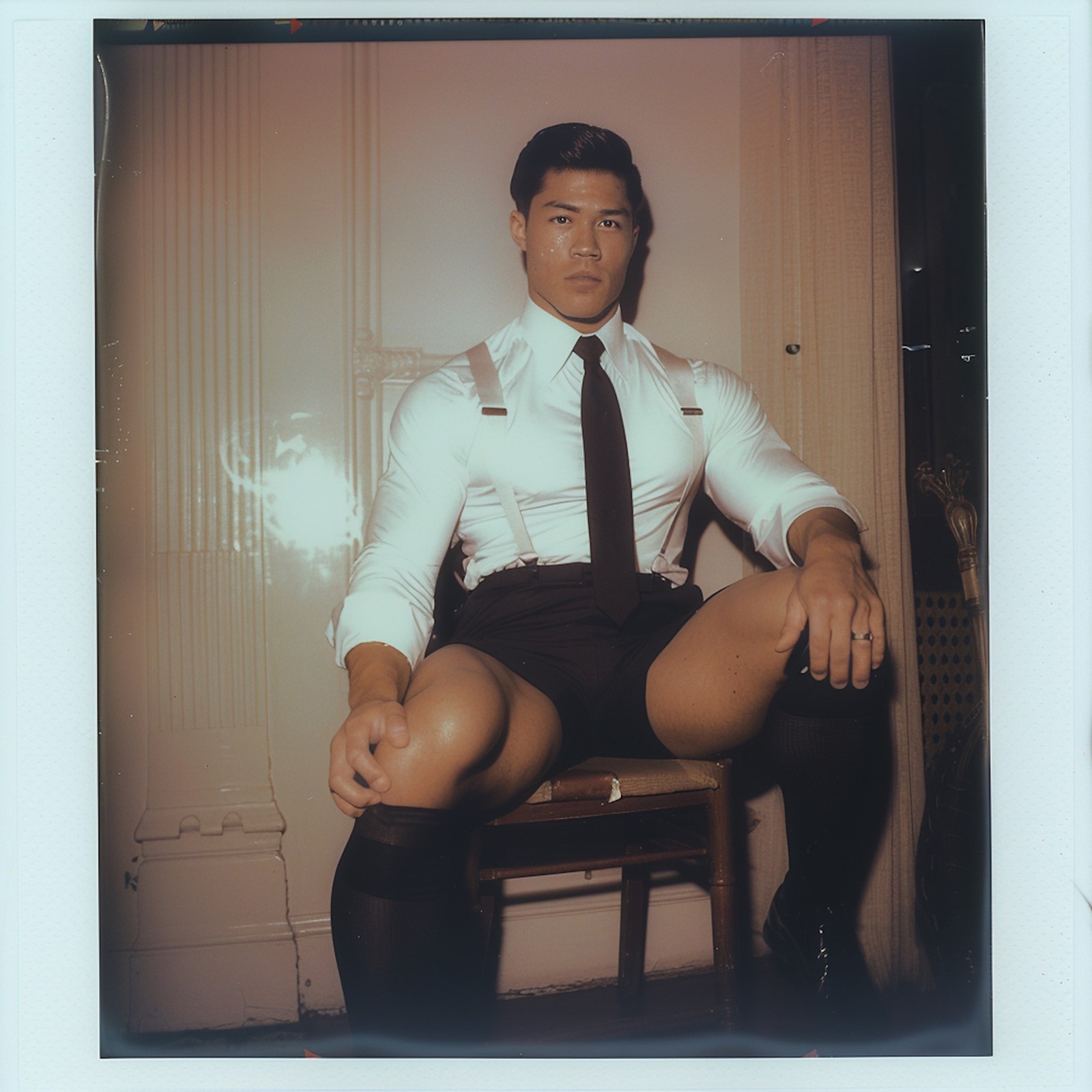
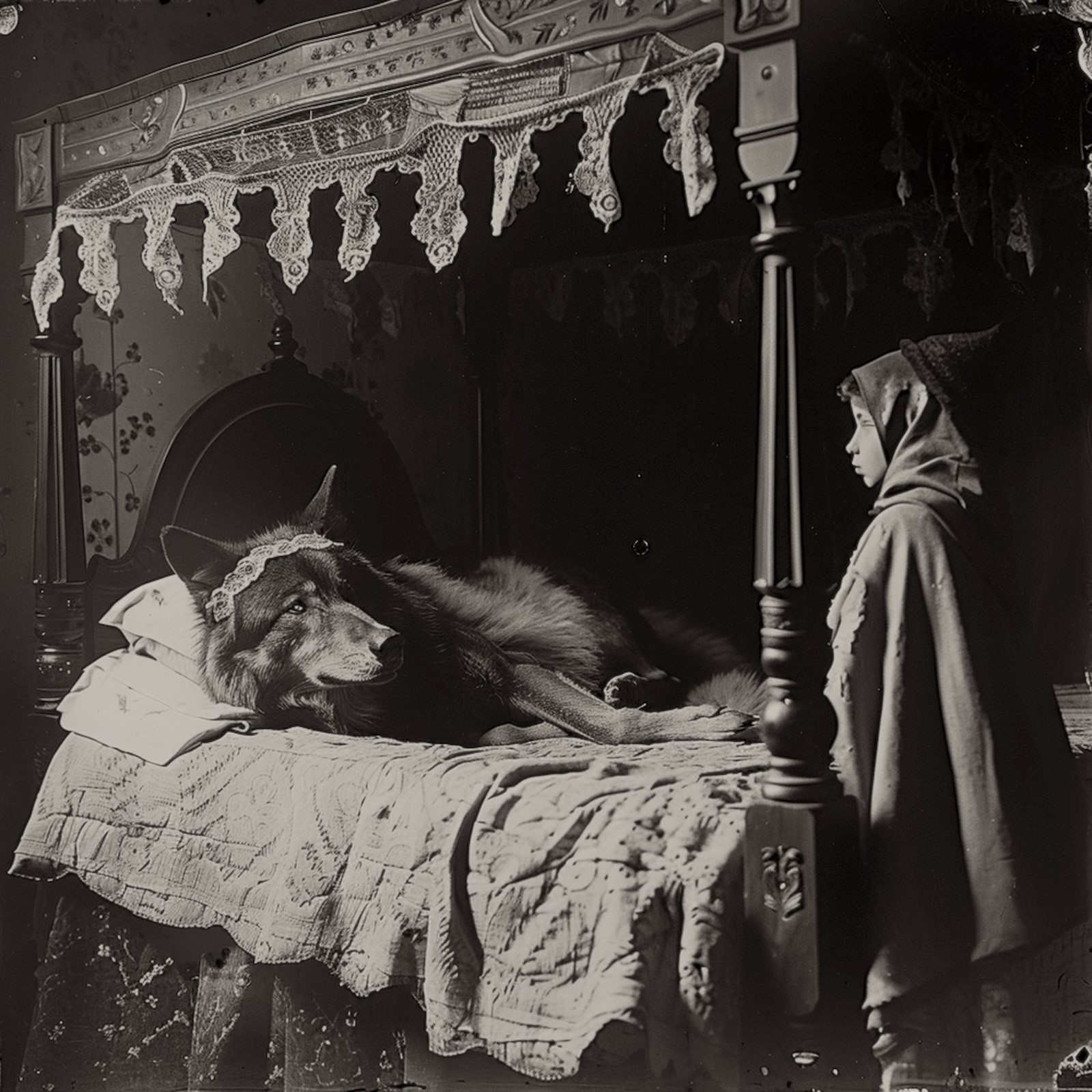
AM: It seems like you need a sophisticated visual vocabulary, but also to be able to use written language in a sophisticated way as this is what prompts Midjourney to create the images. We know you primarily as a visual person, can you give me some insight into how you use written language in this process?
SF: You must be quite precise, you quickly realise that AI isn’t a sentient being, so whatever you put in, it will just take it verbatim. There is a lot of trial and error, and a lot of editing. I would say 95 per cent of the images it creates are meaningless. I’m precise about the parameters, such as a specific type of photography or lighting or environment. But you also have to leave certain things vague enough so that it will come back with suggestions, you shouldn’t be too prescriptive.
I think it’s helped that I’ve worked in the world of photography and image-making for my whole career and I’ve got a huge bank of visual references. You also realise that it is going to be seen by an audience so you have to make things that you will know they will understand, it’s not just some sort of fantastical thing.
AM: Audience is clearly important to you. You spoke about using Tumblr, you made a publication of pages from your scrapbooks, and now you mainly post these images on Instagram. What do you enjoy about sharing your work?
SF: I guess I’m a show-off, I like having an audience.
AM: Many of the comments on your Instagram posts are working out whether the images are real or fake, what are your thoughts on these responses?
SF: I won’t be happy if I’m fooling people, I don’t want people to come away feeling embarrassed because they think it was a real photograph. I do quite like though, that there is a discrepancy between is it a real photograph or is it AI.
I think that we are living in quite a unique time for what I and other AI artists are doing. In years to come it either won’t be a question or it will be quite obvious to people as they become much more visually sophisticated.
I also imagine that looking back at what I am doing now in five years’ time will probably look very unsophisticated and quite laughable. I feel that the engine, even in the two years I have been working with it, has progressed enormously.
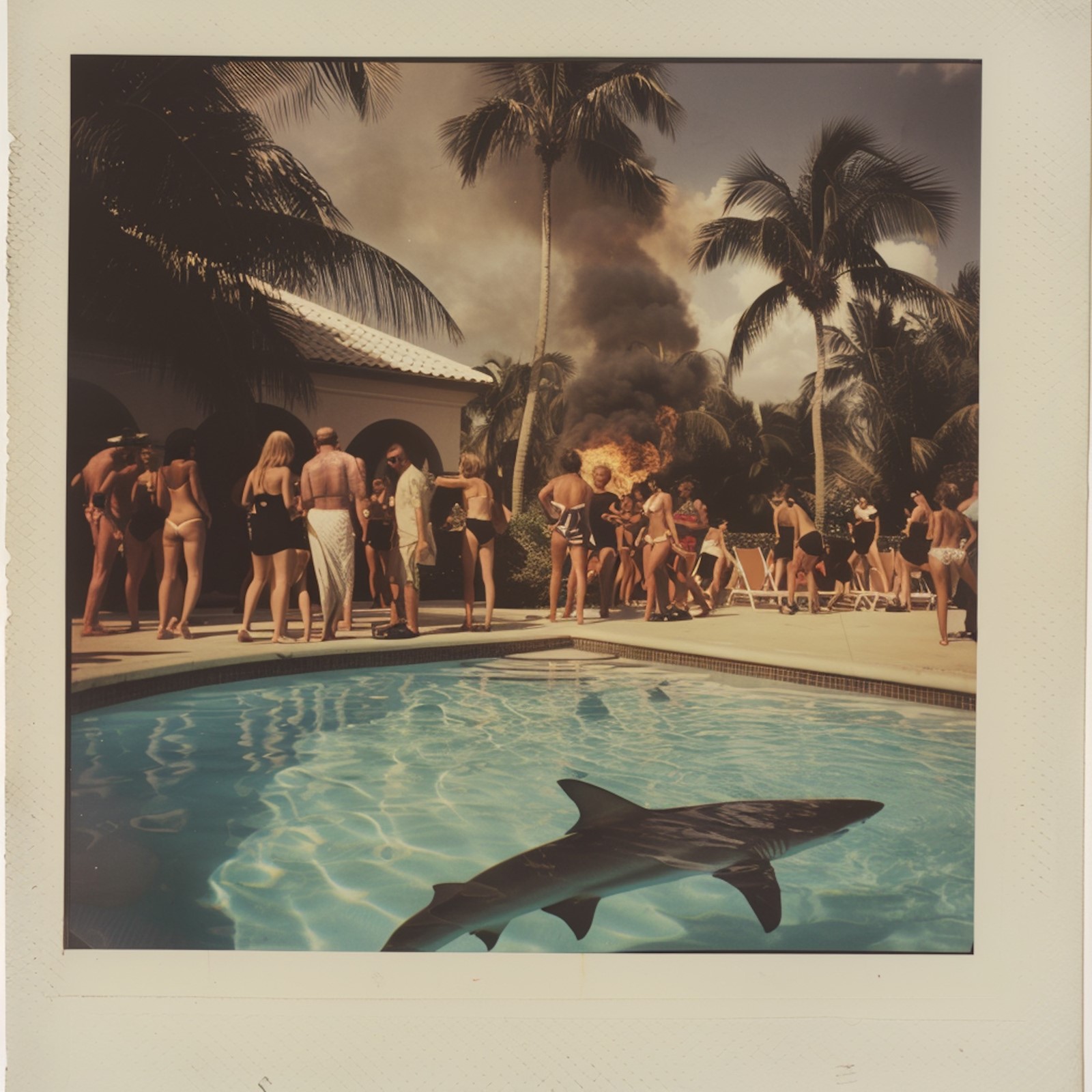
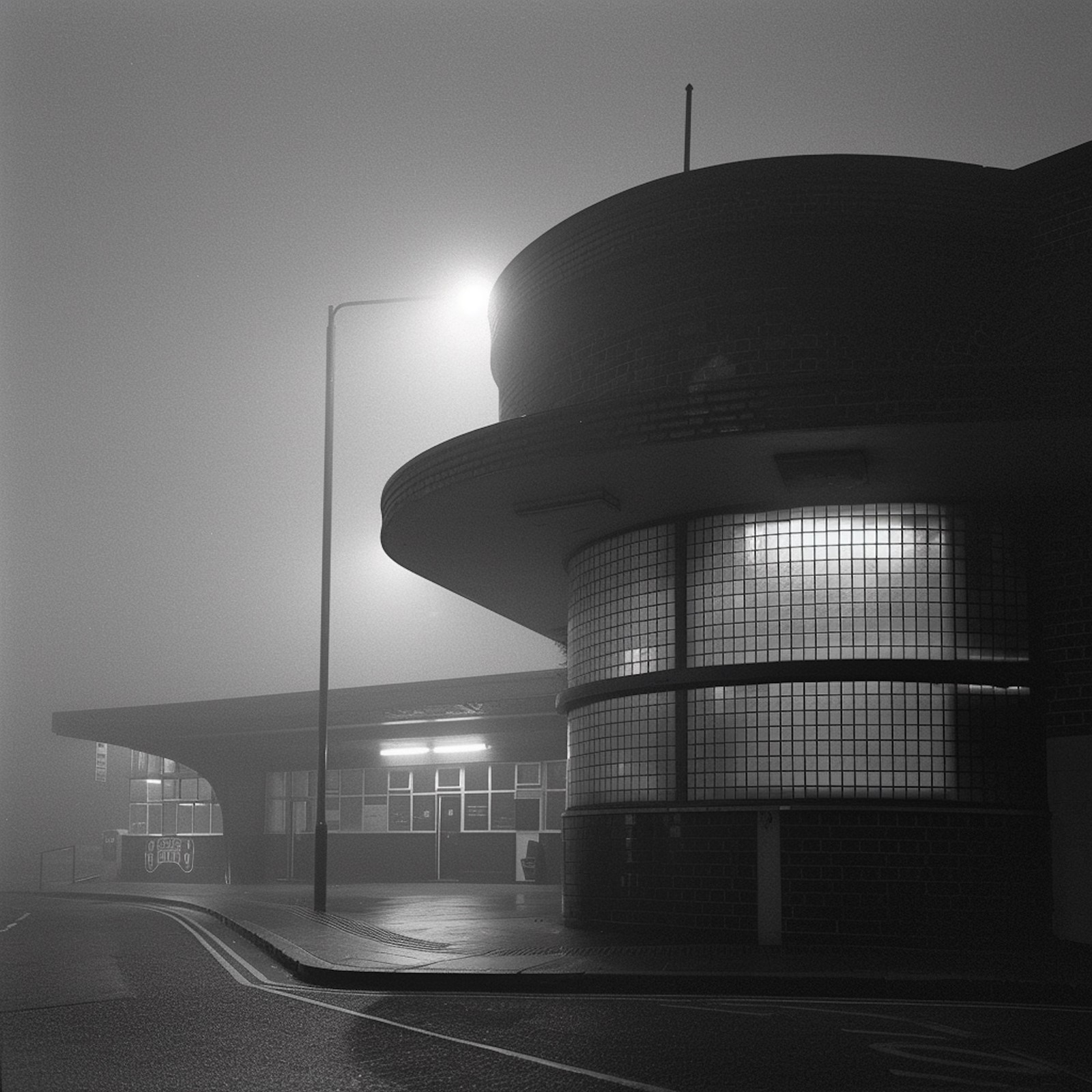
AM: Is the way people interpret the images endlessly interesting to you?
SF: Completely, the whole thing is interesting. I’ve got people who follow me and often they are very nice about it. But I can’t really gauge how it is seen in the wider world. Maybe people think it is too easy or it is muddying the pool. I realise that people may lift things from my output and suddenly it becomes currency in fashion imagery.
For me it is fun, I think of it as entertainment. I entertain myself and I hope it entertains other people. It’s kind of like making a fanzine in a way, I enjoy the editorial process.
AM: You mentioned the prudish nature of Midjourney, almost a form of censorship, have you encountered any bias with the software?
SF: Not so much, only with things that are sexual or violent, and that goes for female nudity as well as male. It’s not particularly homophobic, it’s across the board. I understand why they have to cover themselves, but it would be nice if it was a little less prudish.
AM: Do you see your whole practice as an investigation of visual language?
SF: Yes, I do. Each time I am trying to explore different avenues of photography, different genres.
AM: It definitely feels close to all your other work. At the beginning you said styling was a quicker route for you than making clothes. The clothing exists and you piece it together. This seems similar, it exists, and you are piecing it together.
SF: That’s exactly it. I could think that this is going to be the death of styling and photography, but it exists. The genie’s out of the box, so why not grab onto it and ride?
in HTML format, including tags, to make it appealing and easy to read for Japanese-speaking readers aged 20 to 40 interested in fashion. Organize the content with appropriate headings and subheadings (h1, h2, h3, h4, h5, h6), translating all text, including headings, into Japanese. Retain any existing
tags from
Lead ImageSimon Foxton, 1980s Polaroid test (hair story), 2024Courtesy of the artist
“The genie is out of the box, so why not grab on it and ride,” explains British image-maker, Simon Foxton, while discussing his recent work made with the generative artificial intelligence programme, Midjourney. Foxton is predominantly known for his work as a stylist, examining and proposing new ideas of masculinity, regularly collaborating since the 1980s with photographers such as Nick Knight and Jason Evans, and contributing to numerous fashion publications and consulting for brands including Stone Island.
Recently Foxton retired from styling, now choosing to spend his time experimenting with this new form of image-making. Below, AnOther spoke to Simon Foxton about the role of chance in image-making, audience responses to AI-generated imagery, and how this is the ultimate opportunity for him to create people and worlds.
Adam Murray: How did you first start working with Midjourney?
Simon Foxton: I was working with the hairdresser, Matt Mulhall, he was showing me some images of crazy hairstyles that he had created using Midjourney. This was a couple of years ago, and that was really the prompt for me to give it a go.
I’m no great tech buff, but I basically started playing around with it. Initially I thought it was rubbish, as without the right prompts it can look like slightly cheap science-fiction illustration. But then I realised with the right wording, you can get it to do photographic things, following this it was a lot of trial and error.
AM: What do you enjoy about it?
SF: I love the immediacy of it. I started life as a designer, but then I got into styling because it was an easier route to get across ideas than designing. I found the design process quite laborious, so I happened upon styling and that seemed to be the path of least resistance.
Having recently retired from the world of styling and discovering this, it is allowing me to conjure up a lot of ideas that I’ve had bubbling under for years, but never had the wherewithal to put them into practice. Now I can think about ideas and within a few hours they are on the screen.
AM: When I look through your work; your scrapbooks, your styling, then this, I can see a clear lineage.
SF: I don’t think consciously about it, but you can see this, yes. I’ve had scrapbooks for years and then Tumblr was a huge thing for me until they got kind of prudish. I think I’ve always had that kind of magpie approach of finding things and putting things together that perhaps haven’t been seen before. I think that’s the thing I like about it, you can come up with crazy kinds of juxtapositions.


AM: Previously you have spoken about the idea of creating people and worlds, is this the ultimate opportunity for you to do that?
SF: Absolutely, that’s the whole thing. Then I also concoct the written blurbs to accompany the images when I post on Instagram, just to give some context. I’m not doing it to deliberately fool people, I just like to give the images a world to come from.
AM: How much does chance play in the creation of these images?
SF: A huge amount, that’s what I find exciting and enjoyable about doing it. I can’t speak for other AI engines, but with Midjourney, I find it is very intuitive and organic with what it seems to pick up on. I’m not sure if it learns, but it sends me things that I think it knows I will like, sometimes quite left field, almost out of nowhere, but I like it.
That’s the side of styling and photography that I used to like as well. I used to enjoy shoots when I was in tandem with the photographer. It’s happened a lot with Nick Knight or with Jason Evans. We would have ideas, but something would happen in the process and other things would appear that you hadn’t thought of. I like that process where you are surprised by what you are doing.
AM: Do you miss the experience of collaboration? So much of your work was made in collaboration with photographers, models, hair and make-up artists, all very people-based situations. This seems more isolated as a creative process.
SF: I think that speaks to how I am right now. Since lockdown I’ve changed, I’ve become a more hermit-like person. I’ve never been particularly gregarious, and so it suits me down to the ground.


AM: It seems like you need a sophisticated visual vocabulary, but also to be able to use written language in a sophisticated way as this is what prompts Midjourney to create the images. We know you primarily as a visual person, can you give me some insight into how you use written language in this process?
SF: You must be quite precise, you quickly realise that AI isn’t a sentient being, so whatever you put in, it will just take it verbatim. There is a lot of trial and error, and a lot of editing. I would say 95 per cent of the images it creates are meaningless. I’m precise about the parameters, such as a specific type of photography or lighting or environment. But you also have to leave certain things vague enough so that it will come back with suggestions, you shouldn’t be too prescriptive.
I think it’s helped that I’ve worked in the world of photography and image-making for my whole career and I’ve got a huge bank of visual references. You also realise that it is going to be seen by an audience so you have to make things that you will know they will understand, it’s not just some sort of fantastical thing.
AM: Audience is clearly important to you. You spoke about using Tumblr, you made a publication of pages from your scrapbooks, and now you mainly post these images on Instagram. What do you enjoy about sharing your work?
SF: I guess I’m a show-off, I like having an audience.
AM: Many of the comments on your Instagram posts are working out whether the images are real or fake, what are your thoughts on these responses?
SF: I won’t be happy if I’m fooling people, I don’t want people to come away feeling embarrassed because they think it was a real photograph. I do quite like though, that there is a discrepancy between is it a real photograph or is it AI.
I think that we are living in quite a unique time for what I and other AI artists are doing. In years to come it either won’t be a question or it will be quite obvious to people as they become much more visually sophisticated.
I also imagine that looking back at what I am doing now in five years’ time will probably look very unsophisticated and quite laughable. I feel that the engine, even in the two years I have been working with it, has progressed enormously.


AM: Is the way people interpret the images endlessly interesting to you?
SF: Completely, the whole thing is interesting. I’ve got people who follow me and often they are very nice about it. But I can’t really gauge how it is seen in the wider world. Maybe people think it is too easy or it is muddying the pool. I realise that people may lift things from my output and suddenly it becomes currency in fashion imagery.
For me it is fun, I think of it as entertainment. I entertain myself and I hope it entertains other people. It’s kind of like making a fanzine in a way, I enjoy the editorial process.
AM: You mentioned the prudish nature of Midjourney, almost a form of censorship, have you encountered any bias with the software?
SF: Not so much, only with things that are sexual or violent, and that goes for female nudity as well as male. It’s not particularly homophobic, it’s across the board. I understand why they have to cover themselves, but it would be nice if it was a little less prudish.
AM: Do you see your whole practice as an investigation of visual language?
SF: Yes, I do. Each time I am trying to explore different avenues of photography, different genres.
AM: It definitely feels close to all your other work. At the beginning you said styling was a quicker route for you than making clothes. The clothing exists and you piece it together. This seems similar, it exists, and you are piecing it together.
SF: That’s exactly it. I could think that this is going to be the death of styling and photography, but it exists. The genie’s out of the box, so why not grab onto it and ride?
and integrate them seamlessly into the new content without adding new tags. Ensure the new content is fashion-related, written entirely in Japanese, and approximately 1500 words. Conclude with a “結論” section and a well-formatted “よくある質問” section. Avoid including an introduction or a note explaining the process.


